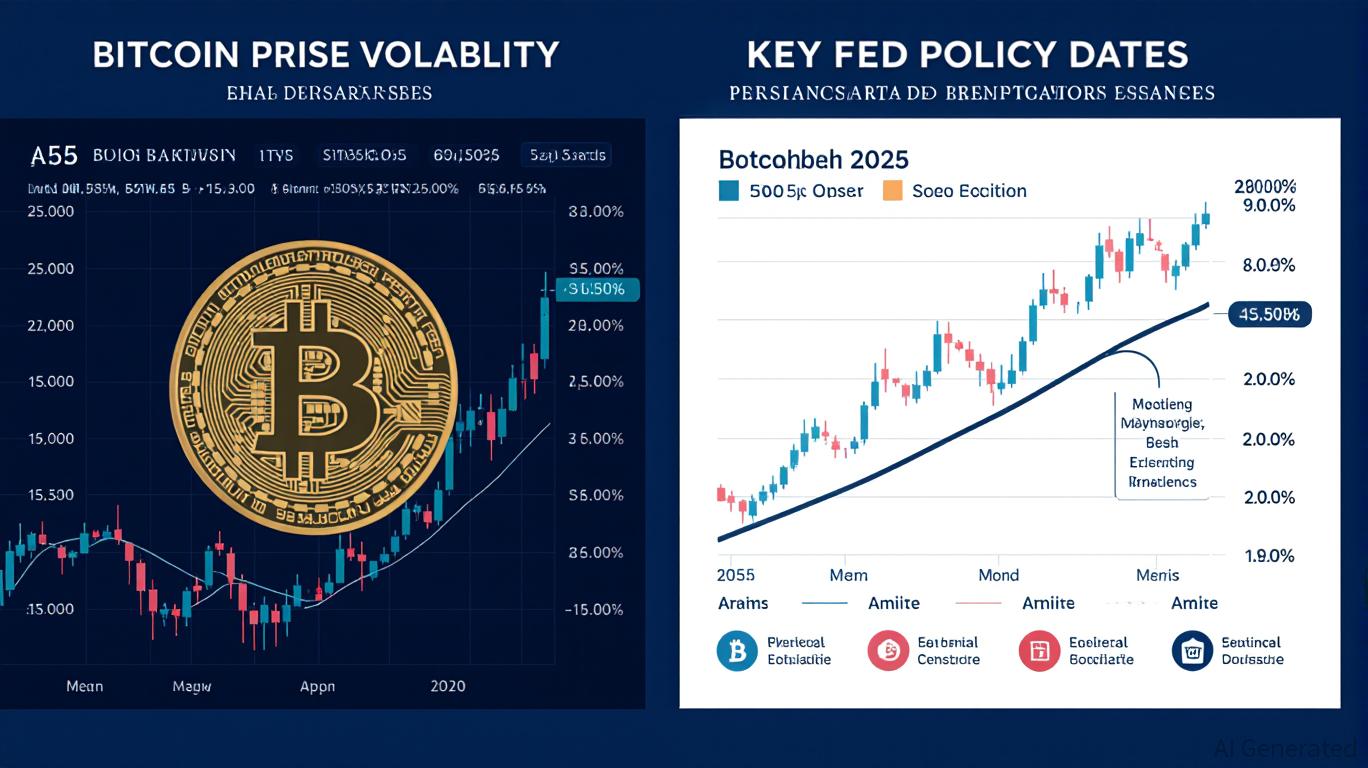Algorand Moves to Passwordless Security to Address Quantum Risks and Meet Regulatory Requirements
- Algorand launches passwordless login via Pera Wallet using FIDO2 standards to combat quantum threats and regulatory demands. - Industry trends show firms like AMI adopting post-quantum cryptography while Prisma AI develops AI-specific security tools. - Ledger explores NY IPO amid rising crypto storage demand, while BIO-key expands passwordless solutions in Middle East/Africa. - NIST/NCSC urge quantum-resistant algorithm migration, positioning passwordless tech as critical for financial/healthcare complia
Algorand, a blockchain network recognized for prioritizing both security and user-friendly design, has rolled out a password-free login option through its Pera Wallet. This enhancement is in line with the industry’s ongoing shift away from conventional passwords toward more advanced authentication solutions, especially as quantum computing and regulatory changes reshape the cybersecurity landscape, according to a
This development mirrors broader trends in both the crypto and cybersecurity industries. For example, AMI has recently adopted post-quantum cryptography (PQC) in its firmware to prepare for potential quantum threats, as covered in the

BIO-key International, a company specializing in identity and access management, has also broadened its presence in the Middle East and Africa by partnering with VaporVM. This collaboration promotes passwordless solutions such as FIDO2-based Passkey:YOU and PIN systems that do not require tokens, as outlined in the
The integration of passwordless login in Pera Wallet supports Algorand’s larger mission to streamline the onboarding process for newcomers while upholding robust security. By eliminating the need for users to remember complicated passwords, the platform seeks to make entry easier for a broader audience. This strategy is similar to that of other companies, such as Phantom Wallet, which has focused on
Regulatory requirements are also driving the adoption of passwordless systems. International bodies like the U.S. National Institute of Standards and Technology (NIST) and the UK’s National Cyber Security Centre (NCSC) have recommended that organizations assess their cryptographic resources and transition to quantum-safe algorithms, as referenced in the
As the sector advances, the integration of AI-powered security, quantum-resistant encryption, and passwordless authentication is set to shape the future of digital infrastructure. Algorand’s recent update, together with innovations from peers and collaborators, marks a maturing market where both security and ease of use are becoming standard expectations.
Disclaimer: The content of this article solely reflects the author's opinion and does not represent the platform in any capacity. This article is not intended to serve as a reference for making investment decisions.
You may also like
Ethereum News Update: Institutions Eye Ethereum—Balancing Legal Challenges and Major Investor Accumulation
- Ethereum nears $3,400 amid rising institutional interest and whale accumulation, signaling potential rebound toward $4,000. - DeFi projects like Ethena and utility tokens RTX gain traction, highlighting Ethereum's role in capital-efficient infrastructure. - Legal uncertainties persist after MEV fraud trial ends in mistrial, exposing tensions between blockchain rules and traditional law. - Whale activity shows $1.37B ETH accumulation in November, contrasting with Bitcoin's weaker institutional demand. - A

Bitcoin Experiences Abrupt Price Swings as Global Economic Conditions Change: The Impact of Federal Reserve Actions and Regulatory Ambiguity on Cryptocurrency Values
- Bitcoin's 2025 volatility reflects Fed policy shifts and regulatory uncertainty, with price surging 86.76% amid rate cuts but sliding below $107,000 due to central bank ambiguity. - Regulatory developments like spot ETF approvals injected $4.21B in October, yet SEC delays and mixed global frameworks (e.g., EU MiCA vs. China's stability focus) create fragmented investor sentiment. - Institutional adoption grows (e.g., SoFi's crypto trading launch), but structural challenges persist, including miner losses

ICX Rises 1.64% as Ongoing Market Fluctuations Drive Continued Short-Term Volatility
- ICX rose 1.64% to $0.0808 on Nov 12, rebounding from a 5.18% weekly decline amid broader market uncertainty. - ICE raised $1.2B via bond issuance and boosted dividends by 7% to $0.48/share, prioritizing shareholder returns and digital infrastructure investments. - The capital will fund global expansion and tech initiatives, though risks persist from regulatory challenges and M&A execution in key markets.
ZRX Gains 4.4% on November 12 Despite Fluctuating Mid-Term Results
- ZRX surged 4.4% on Nov 12, 2025, but remains down 53.83% year-to-date amid volatile price swings. - Short-term bearish sentiment contrasts with 30-day gains, as traders balance momentum rebounds against broader market challenges. - Backtests show limited persistence in ZRX's price surges, with returns reverting to mean levels within weeks. - Analysts emphasize data-driven strategies over forecasts, noting ZRX's susceptibility to macroeconomic pressures and speculative trading patterns.